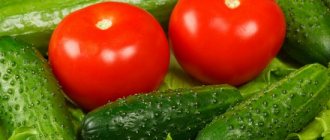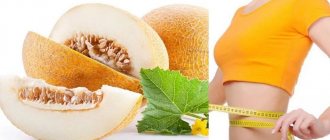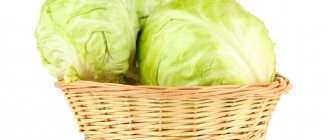One regular tomato has 19.9 kcal, but a cherry tomato has only 4.8. Find out the calorie content of tomatoes in fresh, salted and pickled form, take note of 5 recipes and lose weight easily!
Author: Kristina Lobanovskaya, doctor, practicing nutritionist Article updated: 11/09/2020
Tomatoes are a very common vegetable crop, the fruits of which, depending on the variety and degree of ripeness, can have different shapes (round, elongated, heart-shaped, flattened), size (from small cherry tomatoes to giant kilogram ones) and color (green, yellow, pink, red, dark burgundy). All of them are an excellent dietary product with low calorie content, allowing you to lose weight easily and comfortably.
Fresh
In its raw form, the average calorie content of a tomato is 19.9 kcal per 100 grams. If we translate these indicators into piece measurements, then depending on the size and weight of a fresh tomato, the calorie content will be:
- 1 PC. with a diameter of 6 cm and a weight of 80 g - 15.9 kcal;
- 1 PC. with a diameter of 7 cm and a weight of 120 g - 23.9 kcal.
Only the smallest fruits of the cherry variety have a slightly lower energy value (18 kcal/100 g). One such “cherry” with a diameter of 2 cm contains only 4.8 kcal.
Marinating tomatoes
Many people do not understand the difference between pickled tomatoes and salted ones, and consider these dishes to be one and the same dish. In fact, this is not the case, although the harvesting technology is very similar. Salted tomatoes are filled in jars with brine - a solution of water and table salt, and pickled tomatoes - with marinade. In addition to these two ingredients, acetic acid is added to the marinade. Depending on the recipe, it may also contain berries, peppers, plant leaves (cherries, currants), spices, herbs, etc. Supplementing a recipe with certain components slightly affects the calorie content of tomatoes or brine, so it cannot exclude them from the category of effective dietary products.
The main benefit of pickling is a longer shelf life. In addition, from this product a person receives lactic and acetic acid in larger quantities. A fairly common practice in our country is to marinate tomatoes and cucumbers in the same container. From a nutritional point of view, such a union is only to our advantage, because the beneficial properties of both vegetables are advantageously combined in a powerful vitamin and mineral cocktail.
Nowadays, in order to please your loved ones with a delicious appetizer of pickled cucumbers and tomatoes, it is not necessary to stand at the stove for several hours in the fall, disinfecting jars and distributing the harvest among them. This product is presented in a large assortment in supermarkets and grocery stores, and allows you to choose vegetables with a specific taste: hotter, spicier, sour, etc. True, the benefits of such products are sometimes questionable, because the preparation technology is often far from the original recipe with natural ingredients. To prevent the consumption of store-bought tomatoes and cucumbers from harming the body, you should adhere to the following recommendations when choosing:
- Cloudy tomato brine is a sign of product spoilage.
- The tomatoes themselves must be represented in the jar in a proportion of at least 55% of the total mass;
- The recipe and pickling time for vegetables of different sizes are different, so in jars they should be equally large and ripe.
- Ideal composition for pickled tomatoes: tomatoes, water, vinegar, salt, spices. Moreover, the products should be listed in exactly this order (by decreasing content in the total mass). When adding cucumbers, water may move to the top if the manufacturer does not combine the vegetables into one ingredient list. For example: water, tomatoes, cucumbers, vinegar, salt, spices.
- On average, the shelf life of pickles with the composition described above is 24 months.
- Canned food with flavors, dyes and extracts of spices or herbs are not considered natural.
Marinated tomatoes in a plate
Solyonykh
The calorie content of salted tomatoes is even lower - only 13 kcal/100 g. This is explained by the fact that when pickling at home, the brine is prepared only from water and salt - ingredients that have zero energy value. When such a solution is absorbed, the calorie content of the tomato decreases slightly, since its weight increases due to the addition of water. But during the period of losing weight, this product should not be abused, since salt promotes fluid retention in the body and leads to swelling, which reduces the effectiveness of the diet.
The situation is somewhat different with salted green tomatoes. Due to their denser structure, when pickled, they absorb less water, so the calorie content of a tomato in this case is reduced only to 19.2 kcal/100 g. In addition, green fruits are not so salty and are more suitable for consumption during weight loss.
What is the harm in pickles with tomatoes?
We have figured out how many calories there are in pickled and salted tomatoes - there are significantly fewer of them compared to fresh fruits, although in any case this vegetable is a low-calorie food product. It contains numerous useful elements, the deficiency of which our body usually experiences during the cold season.
Vegetables in this form awaken the appetite more strongly, so it is better not to eat them while on a diet. In addition, in order to avoid excess salt entering the body, it is not recommended to overuse pickled and salted fruits. This is especially true for people with stomach diseases.
Pickled
The highest calorie of all types of canned tomatoes are pickled ones - their energy value is 32 kcal/100 g. This is explained by the fact that even when preparing a marinade at home, sugar is always used along with vinegar and salt. For this reason, the calorie content of the brine increases to 12 kcal/100 ml. In addition, under the influence of vinegar and boiling water, which is poured into tomatoes canned in this way, a significant part of the beneficial substances contained in them is destroyed. Although they still remain a very valuable food product.
Rating of food delivery for weight loss
Delivery of food with calculated calorie content, ready-made diets. No more cooking and counting calories!
Go
Go
Weight loss
Eating right is the best way to stay fit. With the help of tomatoes you can make your diet even more correct and healthy. Tomatoes are an excellent substitute for dinner, and can also be used in special diets where other foods are prohibited.
Nutritionists recommend drinking tomato juice more often, because... it satisfies hunger and lifts your spirits. They also advise using a three-day tomato diet, which allows you to say goodbye to 5 kg at once.
The main reason why tomatoes help you lose extra pounds is its red color. The color is determined by lycopene, which accelerates the breakdown of any fats and improves the general condition of the gastrointestinal tract, which promotes weight loss. The second reason is the feeling of fullness that appears immediately after eating the vegetable. And the third reason is low calorie content, and not a single carbohydrate is harmful to the figure.
Dishes
Tomatoes are consumed not only raw, salted and pickled. They are dried, fried, baked, sauces and ketchups are prepared from them, added to soups, main courses and fillings for open pies, and tomato juice, unique in its taste and nutritional qualities, is squeezed out.
Tomato juice
This is a fairly thick drink with a bright tomato taste and aroma. Tomato juice contains the pulp of ripe fruits, so when freshly squeezed it has almost all the properties of fresh tomatoes. Its energy value is 17 kcal/100 ml, which is even slightly less than that of the fruit.
It is recommended to consume tomato juice immediately after squeezing in order to get all the beneficial substances contained in the fruit. In addition, the product is added to various dishes, canned separately as a drink, and is also widely used in the preparation of other preparations. It is especially recommended to use it for preparing tomatoes in their own juice. This method of canning allows you to preserve the original calorie content of tomatoes and even reduce it somewhat, while avoiding the disadvantages that salted and pickled fruits have.
Sun-dried tomatoes
The benefits of sun-dried tomatoes are due to the fact that in such a dish all the vitamins and minerals given by nature are preserved. The calorie content of dried tomatoes is 258 kcal/100 g.
Drying tomatoes is quite simple:
- cut into quarters (or halves if it’s cherry);
- remove excess pulp and juice with a teaspoon;
- sprinkle with spices and herbs to taste;
- lightly sprinkle with olive oil;
- place on a baking sheet;
- Place in an oven preheated to 120 ºC for 2 hours.
Cooled tomato slices are stored in tight fabric bags, like dried fruit, or poured with olive oil in an airtight container.
Tomato salad
The simplest, but very tasty and healthy dish made from tomatoes is salad. Its energy value is 53.1 kcal/100 g.
You just need to cut the fruits into small slices, add a little chopped green or onion, add salt and season with vegetable oil. To obtain the indicated calorie content, take 10 g of oil per 250 g of tomatoes. You can also prepare a salad with sour cream, but to do this you should take into account how much fat it has. To maintain the same calorie content of the dish, instead of 10 g of butter, you should take 50 g of low-fat (15%) sour cream.
Scrambled eggs with tomatoes
To prepare the dish, first fry 50 g of onion in 1 tbsp. l. vegetable oil, then add a medium-sized tomato cut into small pieces, simmer a little and then beat 2 eggs into the mixture. The eggs can be fried covered as a fried egg or mixed together for faster cooking. The energy value of the finished product is 132.3 kcal/100 g.
Omelette with tomatoes
In order not to increase the nutritional value, it is recommended to cook the omelette without oil - in a non-stick frying pan or steamed. When preparing a dish from 2 eggs, 50 ml of milk and 50 g of tomatoes, its calorie content in this case will be 102.2 kcal/100 g.
Properties of dried tomatoes
The appearance of dried tomatoes is not very impressive, but this does not affect their taste at all, and in terms of the amount of nutritional content, sun-dried tomatoes are in no way inferior to canned or fresh ones.
Their rich spicy taste and aroma, as well as versatility of use, will delight lovers of delicacies all year long, provided the correct cooking technique is followed. Let's take a closer look at the beneficial properties and disadvantages of this method of preparing vegetables.
Benefit
Sun-dried tomatoes can enrich our body with a whole list of useful nutritional components due to the fact that they do not spoil, which means they store all the vitamin and mineral elements a person needs for a long time.
- The product in question has a fairly wide range of beneficial properties that affect health:
- Since dried tomatoes have an average calorie content, they can easily be integrated in moderation into various diets and proper nutrition. By including them in your daily diet, you will transform and significantly diversify it.
- Being a potent antidepressant, dried tomatoes will help improve your mood and general condition, and also have a positive effect on brain function and help improve memory.
- Due to the preservation of the antioxidant lycopene during heat treatment, dried tomatoes slow down the aging process and significantly reduce the risk of malignant tumors.
- Due to the high potassium content in sun-dried tomatoes, the functioning of the cardiovascular system is improved and swelling is prevented.
- Vitamins and minerals, present in dried tomatoes in large quantities, effectively affect the functioning of the gastrointestinal tract, as well as vision and the circulatory system.
Like any product, sun-dried tomatoes have certain contraindications, and the dried vegetable can only cause harm if you overeat, as it contains a high level of oxalic acid, which has a destructive effect on the liver.
- People suffering from:
- chronic diseases of the gastrointestinal tract;
- acute diseases of the liver and pancreas;
- the presence of stones in the bladder;
- gout;
- joint diseases;
- increased susceptibility to food allergies;
- hypertension.
The nutritional value
With minimal calorie content, tomatoes have high nutritional value and an optimal ratio of dietary fats, which is why they are often included in the menu of various diets. In addition, you can spend fasting days on fruits and tomato juice and even follow a mono-diet.
Proteins fats carbohydrates
The content of proteins, fats and carbohydrates in tomatoes of different varieties and different degrees of ripeness varies slightly. As a rule, the amount and proportions of BJU depend on the color of the tomatoes:
- 100 g of red fruits contain (in grams): proteins - 1.1;
- fat - 0.2;
- carbohydrates - 3.7;
- proteins - 0.9;
- proteins - 0.6;
- proteins - 1.0;
- proteins - 0.8;
It should be borne in mind that fruits with a sweeter taste contain more carbohydrates, which slightly increases the calorie content of tomatoes of these varieties.
Macro- and microelements
Tomatoes contain a lot of fiber, pectin, and minerals. The chemical composition of the fruit is represented by the following elements:
| Macro- and microelements | Quantity per 100 g | % of daily value |
| Potassium | 290 mg | 11.6% |
| Chlorine | 57 mg | 2.5% |
| Sodium | 40 mg | 3.1% |
| Phosphorus | 26 mg | 3.3% |
| Magnesium | 20 mg | 5% |
| Calcium | 14 mg | 1.4% |
| Sulfur | 12 mg | 1.2% |
| Iron | 0.9 mg | 5% |
| Bor | 115 mcg | |
| Copper | 110 mcg | 11% |
| Fluorine | 20 mcg | 0.5% |
| Nickel | 13 mcg | |
| Molybdenum | 7 mcg | 10% |
| Cobalt | 6 mcg | 60% |
| Chromium | 5 mcg | 10% |
| Iodine | 2 mcg | 1.3% |
| Selenium | 0.4 mcg | 0.7% |
| Zinc | 0.2 mg | 1.7% |
| Manganese | 0.14 mg | 7% |
Of particular value is the presence of potassium, copper and cobalt in tomatoes:
- potassium is the main intracellular ion, without which normal regulation of water, electrolyte and acid balance, as well as the conduction of nerve impulses, is impossible;
- copper - improves redox processes, increases the absorption of proteins, participates in iron metabolism, increases the supply of oxygen to tissues;
- cobalt - increases the activity of enzymes that affect the metabolism of fatty acids and folic acid metabolism.
In addition, ripe fruits contain lycopene, a carotenoid coloring pigment that gives the fruits their color. Lycopene is a powerful antioxidant that protects the most important internal organs (especially the stomach, intestines, lungs) and tissues from cancer, reduces the risk of cardiovascular diseases and slows down the aging process.
Vitamins
The vitamin composition of tomatoes is also rich and varied:
| Vitamins | Quantity per 100 g | % of daily value |
| C (ascorbic acid) | 25 mg | 27.8% |
| B4 (choline) | 6.7 mg | 1.3% |
| Beta carotene | 1.2 mg | 24% |
| PP (nicotinic acid) | 0.5996 mg | 3% |
| E (alpha tocopherol) | 0.4 mg | 2.7% |
| B5 (pantothenic acid) | 0.3 mg | 6% |
| A (retinol) | 0.2 mg | 22.2% |
| B6 (pyridoxine) | 0.1 mg | 5% |
| B1 (thiamine) | 0.06 mg | 4% |
| B2 (riboflavin) | 0.04 mg | 2.2% |
| B9 (folic acid) | 11 mcg | 2.8% |
| K (phylloquinone) | 7.9 mcg | 6.6% |
| H (biotin) | 1.2 mcg | 2.4% |
In terms of the amount of ascorbic acid, tomatoes are not inferior to citrus fruits and black currants. Vitamin C is an active participant in redox reactions, improves the functioning of the immune system, strengthens blood vessels and promotes overall rejuvenation of the body. Considering the low calorie content of a tomato, this vitamin and mineral composition makes it one of the best foods for dietary nutrition.
Pros of the tomato diet
Tomatoes often become the basis of various diets and even mono-diets (when only one product is eaten, without indulgences or variety). Of course, when choosing such a meager diet based only on tomatoes, you need to consult a doctor and carefully monitor your well-being during the diet.
But in general , tomatoes, if consumed regularly over several days , can affect weight as they will help:
- as a diuretic to remove excess moisture from the body;
- as a mild laxative to cleanse the intestines;
- improve the body's metabolic processes;
- feel light;
- reduce cholesterol levels.










